Cat Quest II is an action RPG about two heroes, a cat and a dog, who are summoned to a world where two kingdoms are about to descend into a cataclysmic war. A magical spirit named Kirry greets the pair, explaining that they are the rightful kings of the two kingdoms. To stop the war and depose the impostor kings, Lioner the Purrsecutor and Wolfen the Labrathor, the pair must work together to gather the shards of the mighty Kingsblade and reforge it into a weapon that will unite the two kingdoms. Their quest will be difficult as they must create their bond of friendship in a world filled with deep enmity between the cats of Felingard and the dogs of the Lupus Empire.
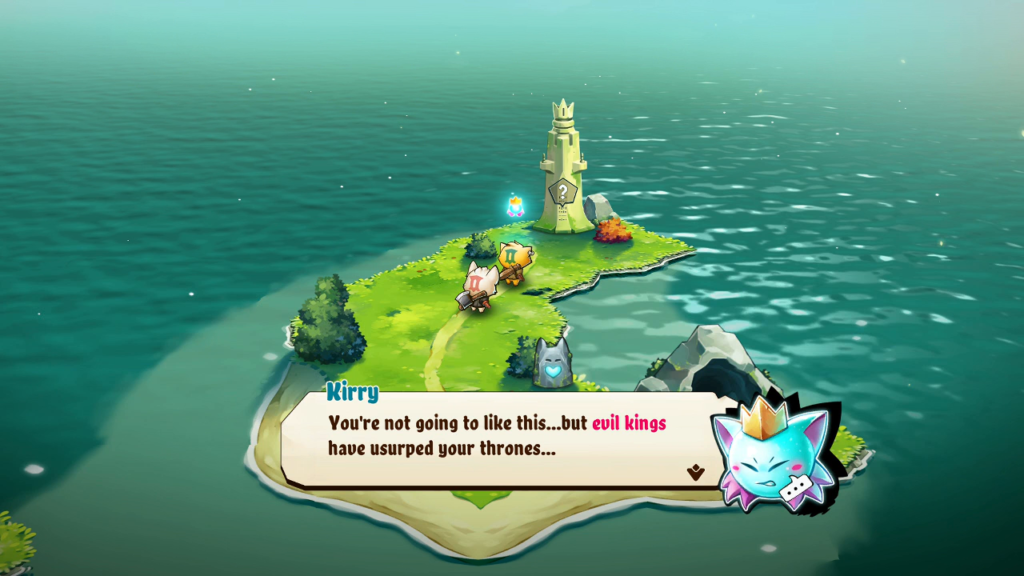
Cat Quest II is broadly similar to its predecessor, to the point that I feel if I pointed towards my review of that videogame, its impressions would apply here as well. Most aspects of the first installment’s world and how I interact with it are brought forward here.
I help the player characters explore a literal world map where cities and landmarks have their names scrawled in the ground beside them. Checked lines denote quest routes and large red Xs mark objectives. Everything about the world—healing, saving, shopping, combatting, questing, and traversal—are rendered on this map, minimizing the need for disruptive loading screens. I am assured I am always in motion towards my next goal or discovery. Only dungeons briefly whisk me away from the map, but they are small, self-contained, and load instantaneously. I conquer most dungeons in only two or three minutes and am immediately brought back to the world map to track down another one.
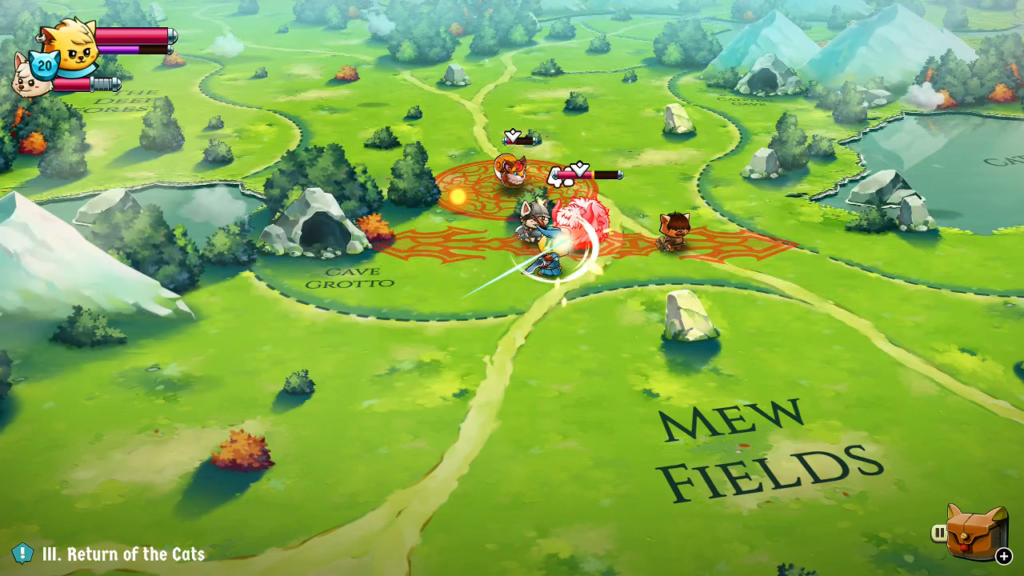
Combat is fast and simple. Each enemy attacks by marking the field around them with a shape and gradually filling that shape with red. When the shape is completely full, the attack is unleashed. My job is to keep the player character out of those damage fields, running in to attack with swings from a weapon or waves of elemental magic during moments of opportunity. Against a single enemy, this is almost laughably easy. Rarely am I fortunate enough to fight against one enemy at a time. Their intersecting damage fields create an obstacle course that is regularly filled with deadly bursts of light and sound.
The smartest and most original ideas are found in looting and improving equipment. Weapons and armor pieces for the head and body are earned from side quests and found in chests spread throughout Felingard’s and Lupus’ dungeons. What I get is randomly generated, but receiving a duplicate isn’t a waste. When a copy is found, then that piece of equipment will be improved by a significant amount. I never feel the need to return to town and sell piles of worthless items.
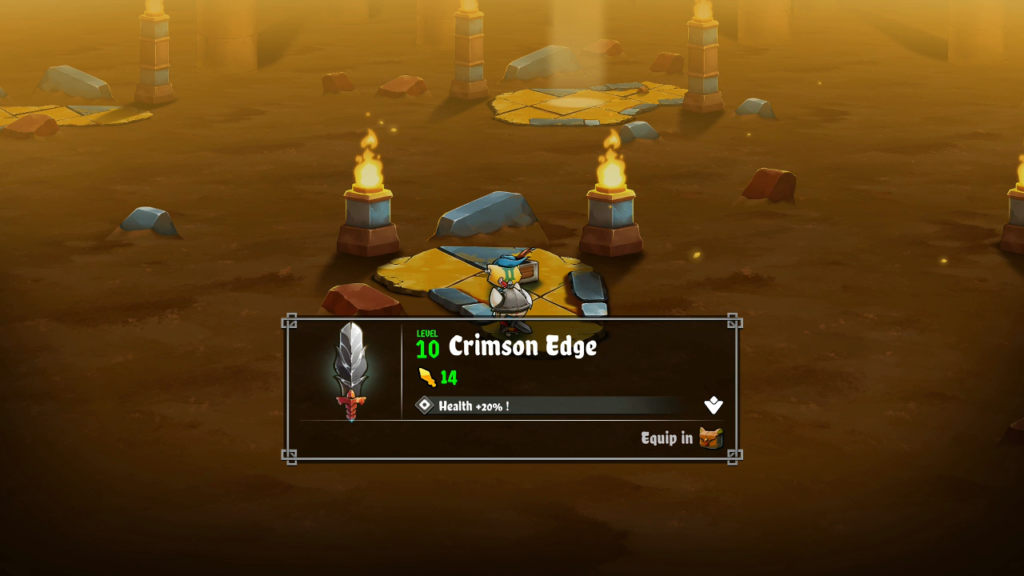
I want to find as many pieces of equipment as I can. More equipment gives me more options to outfit the player characters for different situations. More equipment also makes options more powerful. It’s the most revolutionary idea the Cat Quest series introduces to action RPGs and I wish other videogames would expand upon it.
Cat Quest’s ethos is to use design simplicity to create an exhilarating sense of speed. There’s never a moment to stand still. It’s at its best when there is a consistent stream of new places to go, new things to do, and new items to discover.
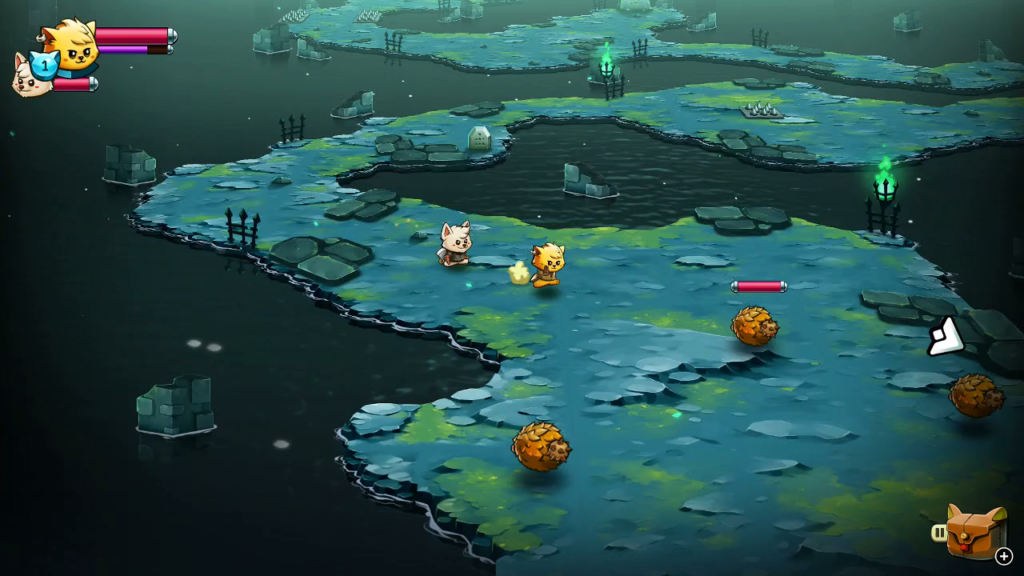
Despite all of these mechanics and design philosophies carried over to Cat Quest II, it would be inaccurate to say it is wholly a repackaging of its predecessor. The biggest addition is a second player character. Having a Player Two is the biggest boon to the experience, but even playing solo this second player character is a transformative addition.
The first of Cat Quest’s player characters is similar to the one from the first videogame: A heroic orange cat who explores a pun-filled land of fantasy cat (and now dog) adventures. The sequel contrasts him with a new dog hero who shares equal weight in the journey. Playing solo, I can switch between them at any time with the push of a button. Whether their journey takes them through a radically reimagined Felingard or to the new neighboring continent of Lupus, they must work together to complete their quest.
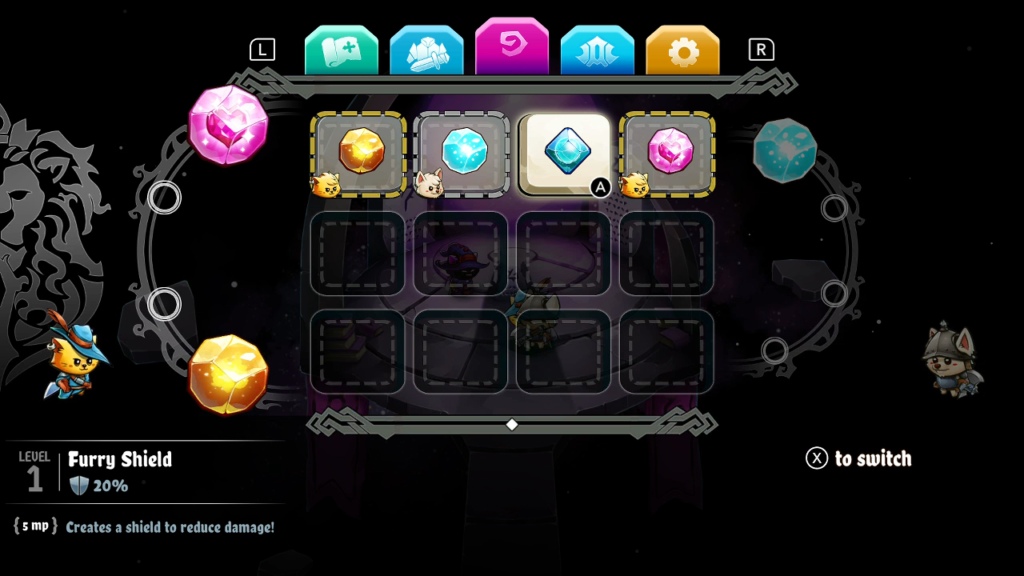
Less transformative but by no means less impactful are updates to magic. Spells are now learned from tablets hidden across the Felingard and Lupus Empire continents as well as in dungeons, requiring more exploration to discover them all. They can also only be equipped by one of the player characters at a time. Requiring each to have a unique spell loadout adds a new layer of strategic depth to character building.
Part of that new strategic depth comes from equipment. The effects of Cat Quest I’s armor are carried over to the sequel. Spellcasting equipment increases spell strength but rarely confers health bonuses. Heavy armor creates a second layer of hit points which regenerates outside of battle. What is different now is equipment pieces’ roles are much more defined by adding new passive effects. In addition to boosting the power of all spells, the Blue Mage Hat also increases lightning spell damage by 15%. Pairing the Blue Mage Hat with the Blue Mage Vest and the Lightning Staff confers a hefty 45% boost to lightning damage. By wearing this complete set, I am incentivized to focus exclusively on using the Lightnyan spell. If I want to use the Flamepurr or Freezepaw spells, I am better off seeking out the Fire Mage and Ice Mage equipment sets instead.
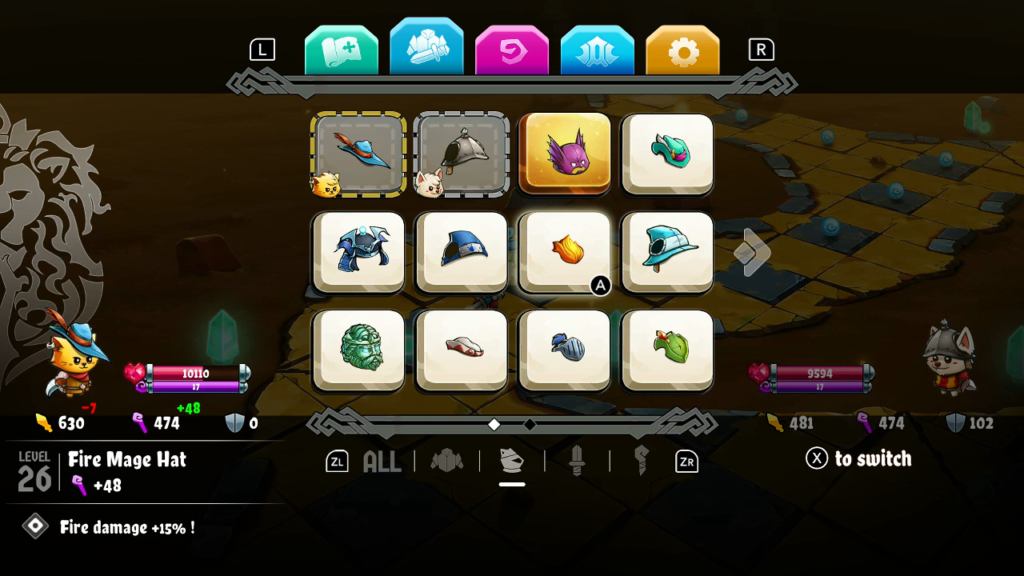
Passive effects on other equipment sets create more interesting scenarios. The Ranger set increases the effectiveness of the dodge roll, making it easier to avoid enemy attacks while conferring comparatively less effective health and damage boosts. The Old Master set has sky-high physical attack stats, but its passive lowers health by a flat percentage—45% total with all three pieces equipped. This turns the player characters into a glass cannon. They hit harder, but get hit harder too.
What is lost through these refinements to magic and equipment is a sensation of speed. Not in a dramatic way; the design philosophy is still built around constant forward momentum. The momentum feels less pronounced, slowed from “exhilarating” to “satisfying” by the many adjustments.
Equipment is partly to blame. The first Cat Quest keeps most of its equipment upgrades out in the field. The Blacksmith is the only alternative and proves expensive, randomized, and thankfully optional. In Cat Quest II, the Blacksmiths Kit Cat and Hotto Doggo may upgrade specific pieces of armor and weapons respectively for a small fee. This proves invaluable as it is much more difficult to accumulate upgrades through exploration alone. The downside is the need to make special visits to the Blacksmith for upgrades breaks up the momentum.
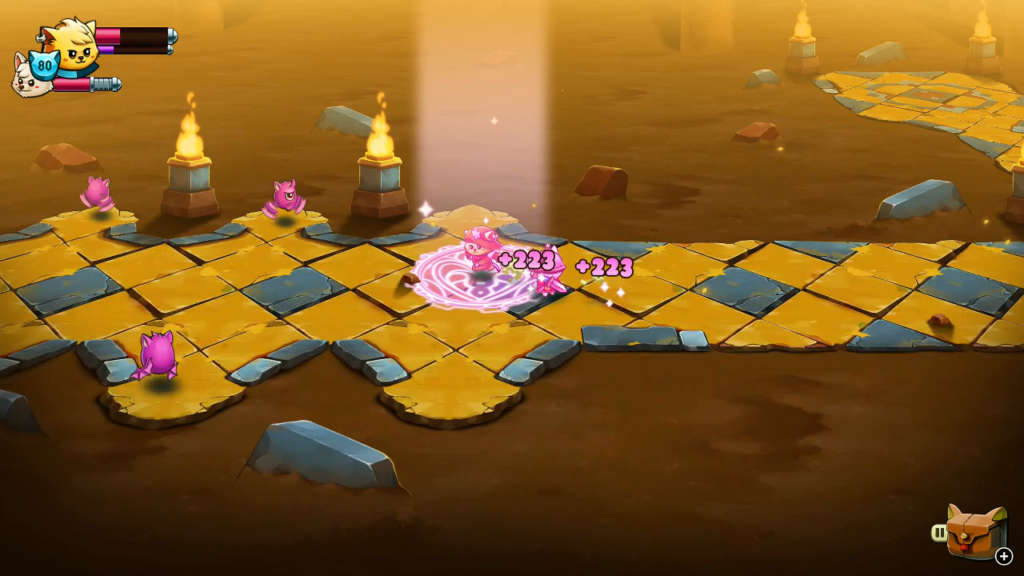
The bigger brake on fast pacing is magic. It’s simply not as powerful this time around, using larger quantities of a limited mana bar for lesser effect. Upgrading spells at an Arcane Temple helps, but is incredibly expensive, which diverts funds I need to keep equipment upgraded. I especially feel this with the Healpaw spell, which heals a small amount over several seconds. If I don’t specifically outfit one of the player characters in White Mage robes to specialize in it, it’s practically worthless in the latter half of the adventure.
In short, Cat Quest II feels slower than its predecessor because it’s slightly less simplistic in its design. Magic is rebalanced to be weaker, putting a lot more of the heavy lifting on equipment. As a result I spend a lot more time thinking about what the player characters are wearing and making special Blacksmith trips for upgrades. Even with this extra consideration, I still have a comparatively more difficult time in combat. The refinements make Cat Quest II a technically more challenging and robust videogame, but I also find I take much less satisfaction from playing it. Cat Quest I is fun because it is a little too broken in my favor.
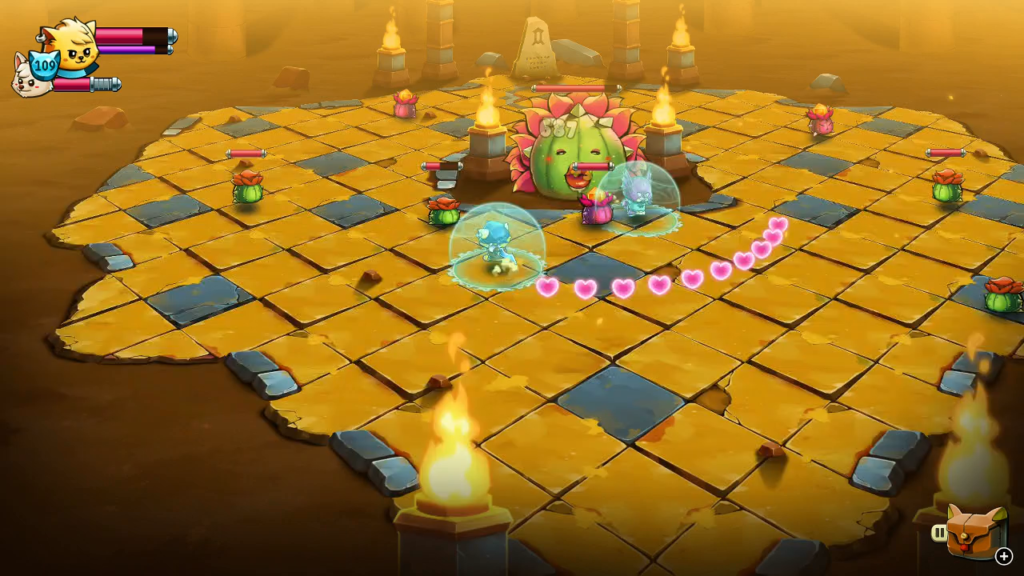
Cat Quest II is more a refinement to its predecessor than an evolution. It is not devoid of passion and effort, but its changes mostly consist of tweaks to existing ideas instead of all new ones. The biggest improvement is the addition of a second player character, making this a fantastic choice for couch coop adventuring. For players looking for fast and satisfying adventures built on snappy and efficient design, they’re better off sticking with the first videogame. It is more flawed, but those flaws add to its charm and make it more fun to play.